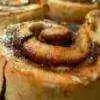-
Welcome to Celiac.com!
You have found your celiac tribe! Join us and ask questions in our forum, share your story, and connect with others.
-
Celiac.com Sponsor (A1):
Celiac.com Sponsor (A1-M):
-
Get Celiac.com Updates:Support Our Content
Asian Rice Pasta, Homemade
-
Get Celiac.com Updates:Support Celiac.com:
-
Celiac.com Sponsor (A17):
Celiac.com Sponsor (A17):
Celiac.com Sponsors (A17-M):
-
Recent Activity
-
- Zuma888 replied to Natosha's topic in Celiac Disease Pre-Diagnosis, Testing & Symptoms7
Should I ask for more testing? Celiac vs. Gluten Sensitivity
You really saved me as I was on day 4 of 3 g per day for 6 weeks. Thank you very much! -
- Zuma888 replied to Natosha's topic in Celiac Disease Pre-Diagnosis, Testing & Symptoms7
Should I ask for more testing? Celiac vs. Gluten Sensitivity
Thank you so much! So I can do 10 g worth of gluten in the form of gluten powder per day for two weeks and that should be enough? -
- trents replied to Natosha's topic in Celiac Disease Pre-Diagnosis, Testing & Symptoms7
Should I ask for more testing? Celiac vs. Gluten Sensitivity
It applies to both blood tests and biopsies. Guidelines for the gluten challenge have been revised for the very issue your question raises. It was felt by medical professionals that the longer term but less intense consumption of gluten approach was not proving to be reliable for testing purposes and was resulting in too many false negatives. But do keep... -
- Zuma888 replied to Natosha's topic in Celiac Disease Pre-Diagnosis, Testing & Symptoms7
Should I ask for more testing? Celiac vs. Gluten Sensitivity
Hey there, You mentioned that current guidelines recommend to eat the equivalent of 4-6 slices of wheat bread for several weeks. Is it ok to do less for a longer period of time, for example 2 slices for 6 weeks? Also, does this recommendation apply to blood tests as well as the biopsy, or do they each have different timelines? Thanks in advance...
-



Recommended Posts
Archived
This topic is now archived and is closed to further replies.